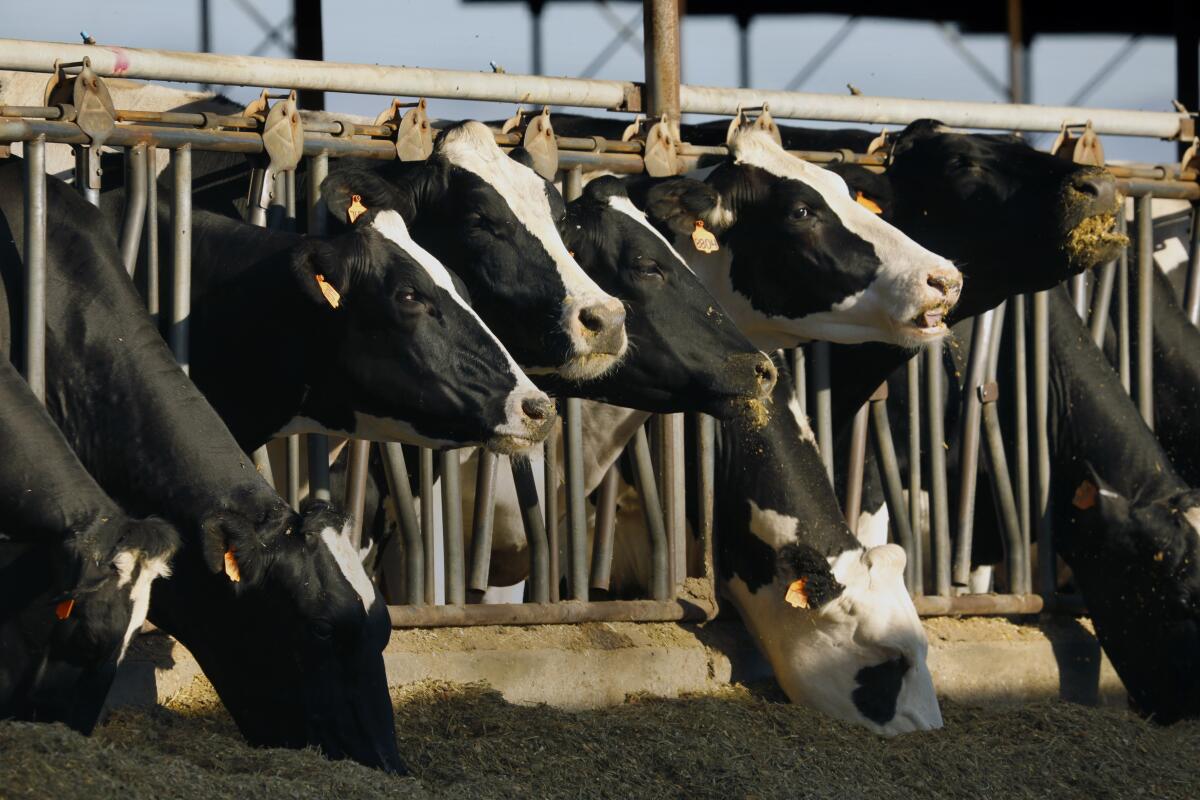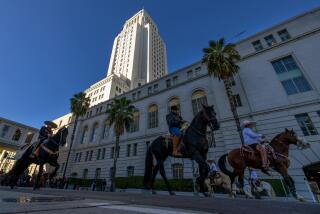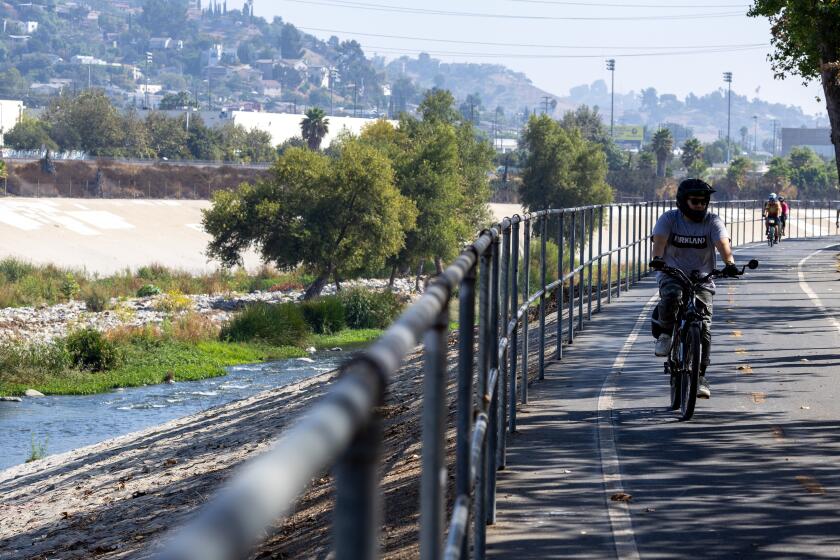Letters to the Editor: Using animals for food is draining California’s water supply

To the editor: In his piece on the need to fallow or re-purpose San Joaquin Valley farmland, columnist George Skelton ignores the fact an estimated 47% of all usable water in California goes toward animal agriculture.
Skelton says we need to “plant fewer thirsty crops, such as almonds.” He ignores the egregious use of lower Colorado River water for alfalfa, which is grown in the California desert and much of it sent overseas to feed livestock.
In Southern California, residents are asked to limit water use to 500-600 gallons per week. One decent-sized hamburger requires more than 600 gallons to produce; the same amount would produce more than four cups of almonds.
A 10% reduction in animal food production would achieve a 4.7% reduction in total water use. It would also substantially increase the water available to California households and result in significant greenhouse gas reductions.
Booker Pearson, Playa del Rey
..
To the editor: Our response to the water crisis has mainly been to chase a decreasing supply with increased conservation. That’s not going to work anymore.
The obvious solution is more water, and history shows us the way. When the L.A. River wasn’t enough, we brought in new water from the Owens Valley. When that wasn’t enough, we imported water from the Colorado River and Northern California.
Those supplies are now vanishing. Conservation is fine, but we need new water. Fortunately, there’s an unlimited supply to the west of us. All we need do is get the salt and other unwanted minerals out of it.
Others have done it. Just one of Saudi Arabia’s desalinization plants can produce 370 million gallons of drinking water a day. Israel has five plants that produce about half the water it uses. There are at least 16,000 operating desalination plants globally.
We need a permanent, reliable source of new water. We can have it if we overcome our lethargy and hustle.
Geoffrey England, Menifee
..
To the editor: Building the already planned Temperance Flat Dam on the San Joaquin River or raising the Shasta Dam would provide at least an additional 1 million acre feet of water storage.
Agriculture is a vital source of tax revenue and employment for the state and is one of our greenest industries. Replacing agriculture with solar panels in the Central Valley, known for months of tule fog in the winter, could be one of the worst solar installations yet proposed.
Robert Rex, Calabasas






